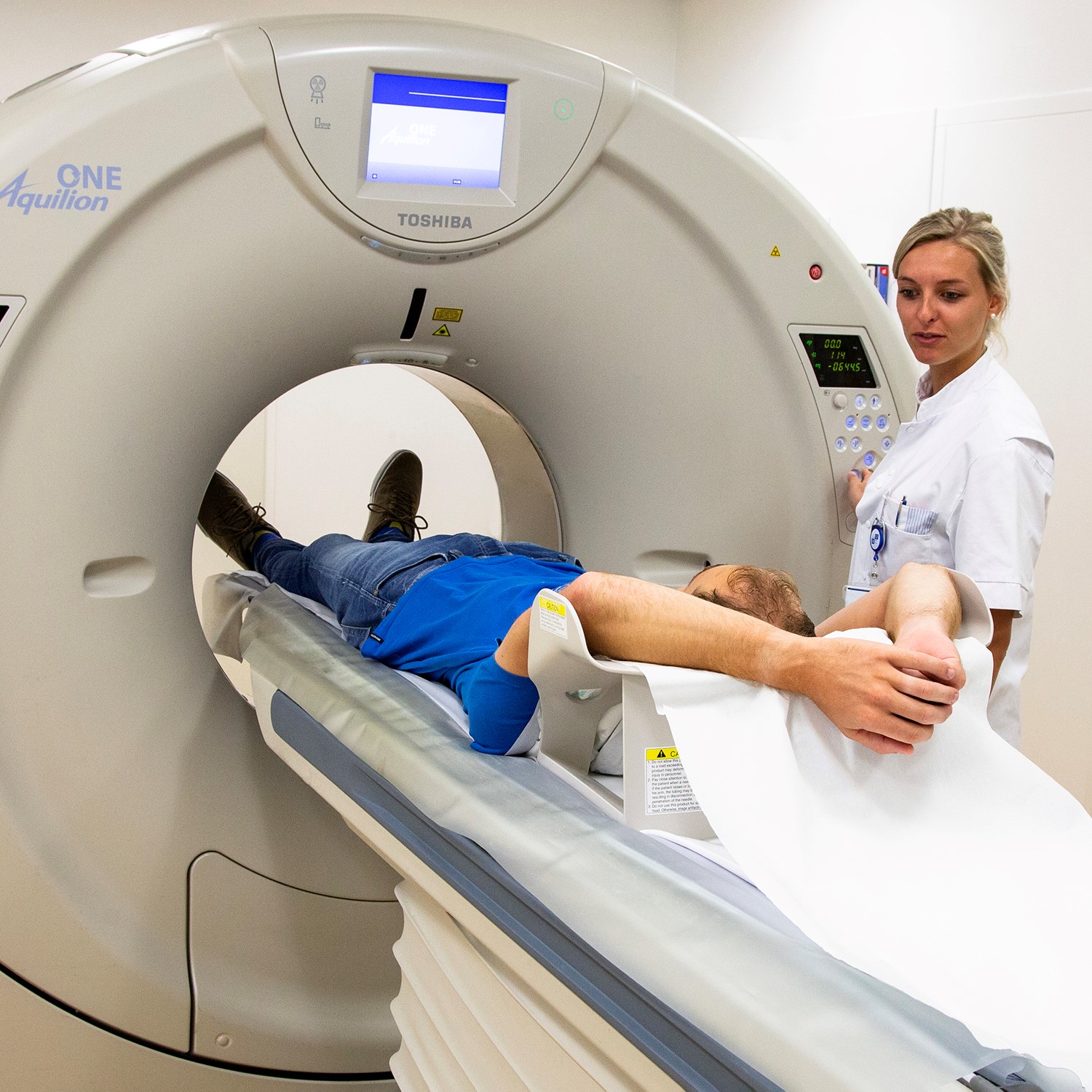Two PhD Candidates in Radiology, Focusing on MRI Technology for Dementia
You have 6 more days to apply
&w=400&h=400)
About your role
In this role, the primary responsibility is to develop and refine advanced MRI technologies aimed at understanding and diagnosing dementia, particularly vascular dementia. Your main task will be to design and conduct research on processes such as perfusion, blood-brain barrier permeability, microvascular pulsatility, cerebrovascular reactivity [hemodynamics PhD position], and mapping brain tissue microstructure [metabolism PhD position]. Collaborating within a consortium, you will contribute to the advancement and validation of cutting-edge neuroimaging techniques. A key aspect of the role is translating research findings into clinically applicable technologies to enable non-invasive and cost-effective diagnostics. Additionally, you will disseminate knowledge through publications and presentations while working with academic, clinical and commercial partners to maximize the impact of the research.
As a PhD student you are eager to design, implement, and validate MRI sequences that produce measures of biological relevance to dementia. Specifically you will:
Hemodynamics PhD position:
- Develop, implement and validate velocity-selective ASL MRI for tissue pulsatility at 3T and 7T.
- Develop and validate 3D BOLD MRI for combined cerebrovascular reactivity, pulsatility, and oxygen extraction fraction measurements at 7T.
- Combine these with other hemodynamic scans, such as blood-brain-barrier ASL MRI.
Metabolism PhD position:
- Implement diffusion-weighted MR spectroscopic imaging (dMRSI) at 7T (and potentially 3T).
- Implement reconstruction pipeline for data processing.
- Optimize and validate dMRSI protocols to quantitatively map intracellular cell-specific metabolites in the human brain.
About your workplace
Both projects will mainly be carried out at the C.J. Gorter MRI Center embedded within the Radiology Department of the LUMC, which includes access to 3 Tesla and 7 Tesla MRI systems. It will also partially be carried out at the Radiology Department of the UMCU, which includes access to 3Tesla and 7 Tesla MRI systems. Both research groups are thriving scientific environments for PhD students with a strong sense of team science and social cohesion. The Hemodynamics PhD position will be supervised by prof. Thijs van Osch (LUMC), dr. Natalia Petridou (UMCU), and dr. Lena Vaclavu (LUMC). The Metabolism PhD position will be supervised by prof. Thijs van Osch (LUMC), dr. Evita Wiegers (UMCU), and dr. Chloe Najac (LUMC).
About you
You are highly motivated and driven to do research and you are eager to learn and curious about the field of MRI and neuroimaging. You thrive in collaborative environments and have strong communication skills, yet you also excel at working independently. Your enthusiasm for scientific discovery and problem-solving will be key to your success in this role. You are someone who approaches challenges with a positive attitude and a deep intrinsic motivation to contribute to the field. Furthermore, you have:
-
- Master's degree in a technical or biomedical-technical field.
- Strong interest in MRI and neuroimaging, with a willingness to learn (prior MRI experience is a plus).
- Good scientific background and problem-solving skills.
- Excellent programming skills.
Our offer
Driven by health; that's our mission. This applies not only to our patients but also to our employees. With Future@Work, we guarantee a pleasant working environment and provide room for development. In order to be able to continue to learn and develop, we offer internal and external training. You are also entitled to an end-of-year bonus (8,3%), holiday allowance, sports budget, bicycle scheme and reimbursement for commuting expenses. Furthermore, as an employee of LUMC, you are also affiliated with the ABP pension fund. This means that 70% of your pension premium is paid by LUMC, leaving you with a higher net salary. Nice, right?
What do we represent?
As an academic medical center, LUMC strives to have a workforce that is a good reflection of society. We are committed to the highest quality in health care, education and (international) research, in which diverse perspectives are essential. Sustainability is also a high priority for us: we are committed to a healthy future, not only for people, but also for the planet. In line with these values, we aim to be a creative and inspiring place to work, where everyone feels at home, safe and valued. It's all about who you are and what you bring to contribute, regardless of your background. Together, we work toward a sustainable and inclusive future, both for the people around us and for the world we live in. Together, we are LUMC.
More information
- As a PhD candidate, your salary will be between €3,017 and €3,824 gross per month (scale Pro, CAO UMC). These figures are based on a full-time position.
- The application procedure involves several stages, including a short, online interview at the first stage, and in the second stage an in-person interview at the LUMC, which will include a presentation of an article that is relevant to this project and on an overview of a recent project you worked on. Detailed information about the next steps in the application process will be communicated during the application process.
- In your application, we ask you to indicate and motivate which of the two positions you are applying for. In the second stage we will also ask you to provide examples of (or a link to) code written by you as well as at least one reference that can be contacted.
- Applications from employment/recruitment agencies will not be considered.